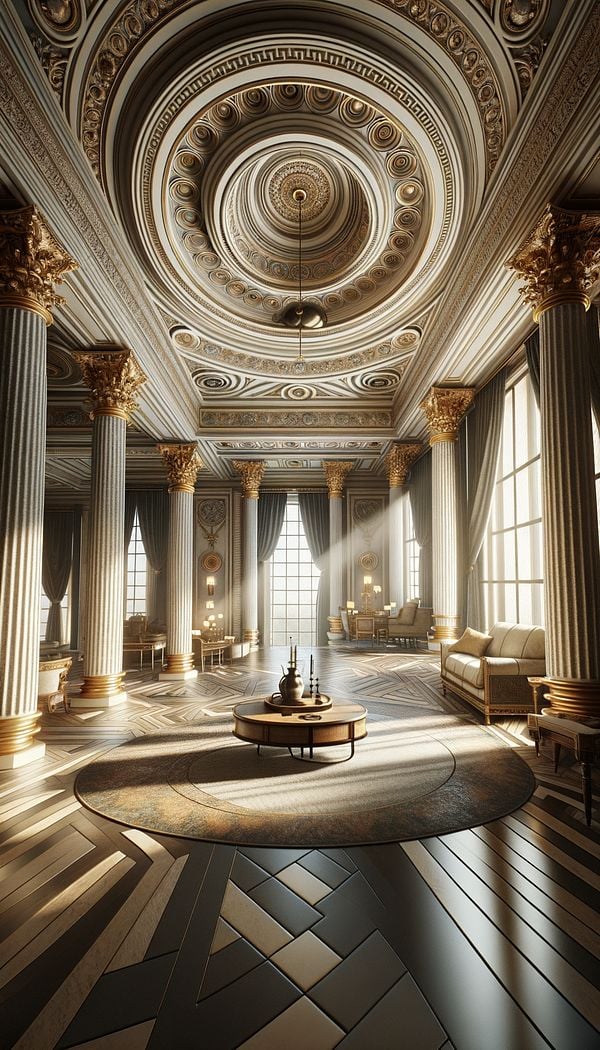What is Early Renaissance?
The Early Renaissance is a period in art and architecture characterized by a revival of Classical influences and a focus on symmetry, proportion, and harmony.
Description
The Early Renaissance marks a pivotal period in the history of European art and architecture, emerging in Italy in the 15th century before spreading across Europe. This era is distinguished by a renewed interest in the art, architecture, and philosophy of ancient Greece and Rome, which artists and architects of the time sought to harmonize with the Christian context of their own era. The emphasis was on creating works that celebrated the beauty of the natural world and the potential of human achievement. This led to developments in perspective, anatomy, and proportion, which were employed to achieve greater realism and depth in art. Architects favored symmetrical designs and made use of Classical elements such as columns, domes, and arches in a manner that was both innovative and respectful of antiquity. In interior design, the Early Renaissance brought a sense of harmony, spaciousness, and light to interiors through carefully considered proportions and the use of natural light. Materials were chosen for their beauty and durability, with marble, frescoes, and wood inlays frequently used to add ornamental detail.
Usage
In contemporary interior design, the influences of the Early Renaissance can be seen in the use of symmetrical layouts, classical decorative elements such as columns and pediments, and the integration of art that emphasizes humanist and natural themes. The principles of harmony, balance, and proportion that defined the era are applied in modern spaces to create environments that are both aesthetically pleasing and thoughtfully designed.
FAQs
-
What are the key features of Early Renaissance interior design?
Key features include the use of symmetry, proportion, and balance in layouts; the incorporation of classical elements such as columns, domes, and arches; the use of natural light to enhance spaces; and the employment of durable and beautiful materials such as marble, frescoes, and wood inlays for decoration.
-
How did the Early Renaissance influence modern interior design?
The Early Renaissance influenced modern interior design by reintroducing classical principles of design such as symmetry, proportion, and harmony. It also encouraged the integration of art and architectural elements that reflect humanist themes, as well as the strategic use of natural light.
-
How is the Early Renaissance different from the High Renaissance?
The Early Renaissance focused on the initial revival of classical antiquity principles, emphasizing balance and proportion. The High Renaissance, which followed, built upon these foundations but pushed towards more complex compositions, a greater depth of emotion, and further advancements in perspective and realism in art.
Practical Application
To incorporate elements of Early Renaissance interior design into a modern space, focus on creating a balanced and symmetrical layout that emphasizes harmony. Employ classical architectural elements such as columns or domes sparingly to avoid overwhelming the space. Choose materials that are both beautiful and durable, like marble or finely crafted wood. Finally, use art that celebrates human achievement and the beauty of the natural world to decorate walls and spaces.
-
Architectural Elements199 articles
-
Design Styles478 articles
-
Decorative Techniques322 articles
-
Historical Periods & Movements150 articles
-
Materials & Textiles360 articles
-
Bed SkirtA bed skirt is a decorative fabric panel that hangs between the mattress and the floor.
-
Foam CoreFoam core is a lightweight material made of a foam center sandwiched between two layers of paper.
-
Drawn To ScaleDrawn to scale refers to the replication of an object or space on paper or software, proportionately adjusting its dimensions to fit a specific size reference.
-
Button TuftedButton tufted refers to a design detail where buttons are sewn through upholstered fabric or leather, creating a dimpled, patterned surface.
-
DormerA dormer is a structural element of a building that extends vertically beyond the plane of a pitched roof.
